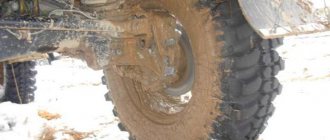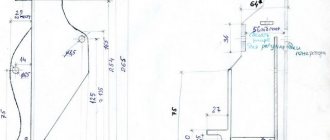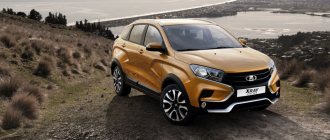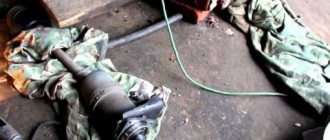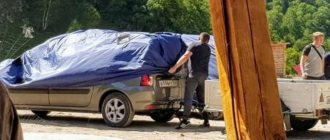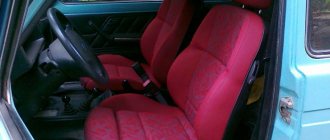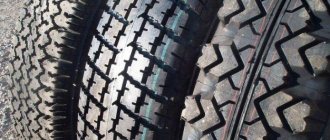08 April 2021 Lada.Online 6 123 0
The assembly and body production (AKP) of the LADA Niva Legend (formerly 4×4 or VAZ 2121, 2131) is located at the AVTOVAZ plant in Tolyatti. Currently, on a modern universal conveyor, which has undergone a complete modernization, LADA Legend cars are produced in 3-door and 5-door modifications, as well as car assembly kits. The website “At the Factory,” affiliated with AVTOVAZ, spoke in more detail about the production of the Niva.
The production of LADA Legend on a new assembly line allowed us to expand the color range and improve quality.
- The number of personnel in production is more than 2 thousand people.
- The total production area is 248,636 sq.m.
- Production capacity is designed for 30 vehicles/hour or 220 thousand vehicles/year.
- The amount of equipment is more than 2500 thousand units.
Welding
The body welding production specializes in the production of LADA Legend off-road bodies. The main consumers of the products are the production sites LADA Legend (production of painting and body assembly), VIS-AVTO, LADA-IMAGE, LADA WEST Tolyatti.
The production process involves about 1000 units of welding equipment, including: automatic lines, multi-point welding machines, assembly and welding stands, stationary welding machines, overhead welding machines, conveyor systems.
Car welding was moved from the 62nd building with a significant change in technology. A new concept for the welding process using robots was developed, and a digital model of the body was created. Automation in individual operations has reached 75%. The welding technology transfer project won the group's annual Renault-TdC Awards.
Where are Chevrolet Nivas made | chevrolet
New Niva Chevrolet 2022 - Review of the new GM Auto VAZ Niva Test drive XCODE Concept 2020
New Chevrolet Niva 2022 - 2022 (New Chevrolet Niva). Second generation. Review on the channel Let's see
Comparative test drive Niva Chevrolet: Renault Duster: Lifan X60: Luidor Auto Nizhny Novgorod
Lada Niva and Kalina in Germany | Bunde Lada in Germany
How to assemble a Chevrolet Camaro
NEW NIVA 2022. Lada 4×4 2020
BMW X6 vs Niva 3D off-road
Body repair. Straightening the wing and panels on the Niva. body repair.
PODIUM UNDER THE DYNAMICS.
Assembly
To date, more than 2 million LADA Legends have been produced. Over the years of production, the car has been completely redesigned, and today's SUV differs from the first modifications in much higher comfort, reliability, dynamics and cross-country ability. The classic, recognizable design has been carefully preserved, with only a few new features, including a modified emblem on the radiator grille.
In addition to car assembly, we produce automotive components and spare parts.
How the legend was created: the history of Niva
In April of this year, the Lada 4X4 celebrates its anniversary: for 40 years now, the model, periodically modernized, has been on the assembly line. Paying tribute to this legendary car, let's remember the main milestones of its history
Editorial
It all started back in 1970, when Chairman of the Council of Ministers of the USSR Alexey Kosygin, as part of the program “blurring the line between city and countryside,” set the teams of VAZ, AZLK and Izhmash the task of creating a comfortable SUV for residents of rural areas.
This is how the VAZ-2121 changed in the process of developing the design and improving the design
The first experimental VAZ-E2121 saw the light of day in 1971. Moreover, his appearance was very far from what we have become accustomed to for forty years. In fact, it was a chassis with a simple tail, on which the concept of a new car was developed - the SUV did not have a frame, which at that time was considered an unheard-of design audacity. Initially, the car was planned to be equipped with a powerful diesel engine, final drives, rear torsion bar suspension and even a tire pressure regulation system, but later they decided to create a simpler version with a high degree of unification with the models already produced by AvtoVAZ, which was economically justified. This prototype allowed the design bureau under the leadership of Peter Prusov to significantly reduce the time needed to create the car. Is a 1.6-liter engine enough, is the gearbox reliable enough, does the car require a center differential lock and downshifts? The answers to all these questions were obtained thanks to the VAZ-E2121. It is interesting that the tests of the car were carried out in the strictest secrecy, and when asked by those interested, the factory workers answered that they were testing a new Romanian SUV.
The VAZ-2121 appeared in a form close to the serial one in 1972. The artist Valery Semushkin worked on the design of the new car. The car, according to the designer’s plan, was supposed to suit residents of both cities and villages. Both a collective farmer transporting his produce to the city market and a worker who decided to go out into the forest to pick mushrooms should feel equally comfortable in it. And since, according to the technical specifications, the car was supposed to have a relatively small trunk, the spare tire, in order to save space, was placed in the engine compartment. At that time, placing the spare wheel on a remote bracket behind the rear door was considered unsightly. In 1973, the VAZ-2E2121, which looked almost like the well-known Niva, was sent on a test run across Central Asia, after which it acquired a headlight cleaner and a rear wiper. An ahometer appeared on the instrument panel, which allowed the driver to monitor the speed when driving in the downshift range of the transmission. In 1974, the car was put up for state tests and in the same year received its own name “Niva”, which was patented. It is interesting that at that time there was no GOST for testing this type of car. After all, the standard testing scheme for SUVs for the Niva was too harsh, but for passenger cars it was the opposite... In the end, they decided to combine both programs, taking into account the versatility of the car. Based on the test results, the car received recommendations for mass production and export. True, before being put on the assembly line, the car received some more improvements. So, the rear “three” lights were replaced with “six” ones, and the headlights were taken from the “six”. The chrome bumper gave way to an aluminum one. A second outside rear view mirror has appeared. The first pilot batch of 50 vehicles was sent to the regions for controlled operation. Representatives of the plant constantly supervised their new product, which made it possible to identify several more “sores”, which were eliminated by April 1977, and the Niva entered the assembly line.
In addition to sales at home, Niva was actively promoted in foreign markets. Over forty years, more than 500 thousand SUVs were sent abroad. This unpretentious, but at the same time quite comfortable SUV has attracted buyers in more than 100 countries around the world. Importers actively re-equipped the car, making it into pickup trucks, convertibles, and styling it according to fashion. In addition, assembly of the model was established in Brazil, Greece, Canada, Panama, Chile, and Ecuador. The Niva was even exported to Japan, becoming the only Soviet car officially sold in this country. By the way, the Japanese, paying tribute to the general designer of Niva, gave Pyotr Prusov in 1986 an advertising brochure for their future Suzuki Vitara with the inscription “To the Godfather of this car.”
In 1978, the VAZ-2121 was awarded a gold medal and recognized as the best car of its class at the international exhibition in Brno. “Niva” has a lot of records. So, in 1998, Niva climbed Mount Everest under its own power, to a height of 5200 meters, in the same year, being dropped by parachute, it ended up in the Arctic and reached the North Pole under its own power, and the next year climbed to the Himalayas to a height of 7260 meters. She also visited Fuji. The reliability of the car is also evidenced by the fact that the production car was able to operate without serious breakdowns for 15 years in Antarctica at the Bellingshausen station. And this is in the complete absence of roads. Niva has a lot of sporting achievements to its credit: multiple participation in the Paris-Dakar rally, Atlas rally, Cameroon Rally and other achievements.
In 2001, the history of the VAZ-2121 as a Niva ended. The holder of the exclusive license for the Niva trademark was the GM-AvtoVAZ joint venture. But the history of the car itself continued and continues under the name LADA 4X4.
1998. “Niva” visited both Antarctica (1990) and the North Pole (1998), more than once conquered peaks under its own power and won victories in marathon rallies
1999. In 1999, "Niva" rose to a height of 5726 m in the mountains of Tibet. Before this, wheeled vehicles never rose to such a height under their own power.
Importers advertised the VAZ-2121 in every possible way in their periodicals; in addition, some of them allowed themselves to adapt the car to their markets through modifications
FOR 40 YEARS, THE LADA 4X4 HAS BEEN ON THE CONVEYOR OF THE VOLGA AUTO GIANT. MANY THINK THAT SHE HAS NOT CHANGED AT ALL DURING THIS TIME. WELL, WE HOPE TO DISCONCEIVE YOU ABOUT THIS. AND HERE WE WILL ONLY GIVE THE MOST NOTICEABLE CHANGES. IF WE'RE TALKING ABOUT SMALL MODERNIZATION, THERE WAS SO MUCH OF IT DURING THIS TIME THAT IT WOULD BE ENOUGH FOR MORE THAN ONE ARTICLE.
APRIL 5, 1977
Assembly of the first production car VAZ-2121 Niva.
1980
Start of production of an export modification of the VAZ-21212 with right-hand drive. The car was produced in limited quantities, primarily for the English market. The vehicles were also supplied to Australia, New Zealand, Mozambique, Japan and Jamaica.
1985
State tests of the floating modification of the Niva - VAZ-2122 (Project "River") have been completed. The State Commission recommended the car for production. The car was positioned as an army SUV for a company commander, but in an open document flow.
1990
Start of production of modification with engine 21214 with central fuel injection. The majority of changes to the engine design are associated with the transition to an injection system, the introduction of elements that ensure compliance with Euro-2 environmental standards and the use of hydraulic compensators. Installing power steering on a car required additional modifications to the engine components.
1993
Start of production of a modification of the VAZ-21213 with a 1.7 liter engine, 5-speed gearbox, updated interior and modernized body. In particular, the third door has been enlarged, which has significantly reduced the loading height. The car also received new lighting equipment.
1995
Start of production of the VAZ-21215 modification with the Peugeot XUD9 diesel engine. It was produced in small series for export, so the package included other bumpers, spoilers, linings, alloy wheels, etc.
1995
The production of VAZ-2131 cars with an extended wheelbase and a five-door body has begun in the AvtoVAZ pilot production facility.
1996
Production of a three-door modification of the VAZ212180 “Fora”, extended by 300 mm, has begun.
1997
The production of VAZ-2329 pickups based on the VAZ-2131 has begun in the pilot production of AvtoVAZ. The vehicle's carrying capacity is 4 people and 350 kg of cargo.
2011
Launch of modifications of the VAZ-21214 with ABS and BAS. The car is partially unified with Niva-Chevrolet. In particular, a new Valeo clutch was installed on it. As a result, the resource of this unit has doubled, and the car itself has become less susceptible to vibration due to a reinforced damper spring and an enlarged disk.
2013
In accordance with the law, daytime running lights in the headlights have been installed on all Lada 4x4 vehicles. Cataphoresis primer and metallic painting have been introduced with a guarantee against through body corrosion for up to 6 years.
2014
In the intermediate shaft, the cardan cross was replaced with a CV joint, which reduced vibrations emanating from the transmission and significantly improved the comfort of the car. A new vacuum brake booster of increased size was introduced - from 8 to 9 inches, a new main brake cylinder with a diameter of 22.22 mm was used instead of 20.64. The result of the modernization was the reliability and durability of the brake system, and the mileage before changing the brake pads increased. The dimension of the shock absorbers was increased, the length and damping characteristics were optimized, which made it possible to increase the dynamic energy intensity of the suspension, the suspension travel from 150 to 170 mm, significantly reduce the galloping effect of the car, and increase the service life of the shock absorbers.
2014
Production of the VAZ-21214 “Urban” configuration has begun with a modified appearance (bumpers, radiator grille), electrical package, air conditioning system and electrically heated seats. The length of the windshield wiper blades has been increased from 330 to 410 mm (the windshield cleaning area has been expanded). Double-jet windshield washer jets have been used (increased washer efficiency).
2016
A transition to Euro 5+ toxicity standards has been carried out, and a modernized hub unit with non-adjustable bearings has been introduced. As standard, cars are equipped with electric windows and ABS. Changes were made to the design of the front axle: it was disconnected from the engine and installed on the front suspension. This decision has led to a reduction in vibrations, which allows, if necessary, to install another (new) power unit on the car.
LADA 4×4: 40 years of achievements
The editors recommend:
Quiz!
Blackvue DVR for knowledge of traffic rules Alternative to a scraper: how to clean car windows without scratching them
Better than Kruzak: Toyota presented a huge frame SUV
3 million is not a luxury: transport tax in Russia will be calculated in a new way
Which cars do dealers make the biggest markups on: list
News Media2
Discussion Cancel
I want to receive the most interesting articles
Other models based on Niva
VAZ-2328 "Wolf"
VAZ-2328 “Wolf” is a pickup truck with a short 2-seater cab based on the VAZ-2131 model. It was supposed to go into production in parallel with the VAZ-2329 pickup truck, but due to low demand, LADA-Tul produced only an installation batch of Volkov.
VAZ-2329 “Bear”
VAZ-2329 “Bear”, “Niva Pickup”, LADA 4×4 Pickup - a pickup truck with an extended 5-seater cab based on the VAZ-2131 model, produced in small series at the VAZ production plant. The car retains its monocoque body (wheelbase 2700 mm) with a reinforced base and has a rear overhang increased by 300 mm. Load capacity is 650 kg. The VAZ-2329 retains the mechanical part from the VAZ-2129/2131. On request, instead of the VAZ 21213 engine, it was possible to install a VAZ-2130 engine (1.8 l, 84 hp). An additional fuel tank is provided, which brings their total capacity to 84 liters. The rear seat in the cabin is original and when folded forms a flat cargo area. The first releases of the pickup truck bore their own name “Bear”.
FVK-2302 "Bison"
FVK-2302 “Bison” is a pickup truck with a frame chassis based on Niva units. A pickup truck with a short double cab and a wooden platform was produced in small series by one of the small Tolyatti companies in 1993-1995. The reinforced rear suspension of the Bison was made with springs from the Volga and a rear axle from the UAZ
VIS-2346
VIS-2346 is a family of pickup trucks with a semi-frame chassis based on Niva units produced in Tolyatti, produced since 1996. Currently, two versions of the pickup truck are produced in small series: VIS-2346 with a short double cab and VIS-23461 with an extended 5-seater cab. Previously, the VIS-23464 pickup truck with a one-and-a-half four-seater cab and the VIS-2348 pickup truck with cabin panels from LADA Samara 2 were also produced. The reinforced rear suspension is made of springs.
BRONTO-1922 “March-1”
BRONTO-1922 “Marsh-1” is a snow and swamp-going vehicle (“pneumatic”) on ultra-low pressure wheels on VAZ-21213 units. It has been produced in small batches by JSC SPA BRONTO since 1997.
Lada 4x4 21214-0000070-20 “Niva Lynx”
“Niva Lynx” is actually a Lada 4x4, even more adapted for off-road driving.
The front suspension travel has been expanded, a spacer has been installed under the upper ball joint and front shock absorbers have increased travel by 25 mm. The travel of the rear shock absorbers has increased by 50 mm. “Lynx” received wheels with 235/75R15 tires with increased lugs. The wheel arches have been modified and rubber arch extensions have appeared.
To increase traction torque, a 4.1 gear pair was installed instead of the standard 3.9. Self-locking differentials are installed in the gearboxes.
One of the first copies of the car belongs to the Prime Minister of the Russian Federation V.V. Putin.
Model characteristics
According to car statistics, the Chevrolet Niva is the most popular and in-demand SUV on the domestic market. This car began to be assembled back in 2002 at the AvtoVAZ enterprise. Over the entire period of its existence, more than 170 thousand units of Niva rolled off the production line of the enterprise.
Depending on the configuration, the machine is equipped with:
- heated seats
- tinted side windows
- alloy wheels
- air conditioning.
Where the Chevrolet Niva is produced today, they try to focus on the safety of the vehicle. To this day, the car is equipped with a 1.7-liter engine that produces only 80 horsepower. There were rumors that Opel specialists were developing a new power plant specifically for this SUV model, which would produce 122 hp. power.
Chevrolet Niva (Russian: Chevrolet Niva) is a serial Russian off-road passenger car. It has permanent four-wheel drive, a two-speed transfer case and a center differential lock.
The production of the model began in 2002 and since that time it has only been restyled once, designed by the Italian design studio Bertone; The release of the new generation was planned for 2022, but in March 2022 work on the project was suspended.
Unlike other Chevrolet models, assembled in Russia and less than 30% localized, only the Chevrolet Niva is truly domestic, with a localization rate of about 90%.
In 2009, Chevrolet Niva was awarded the annual professional award of automotive journalists “SUV of the Year 2009” in the “SUV” and “Premiere of the Year” categories. In 2022, according to the “Professional Jury” of automotive journalists, it was awarded the title “SUV of the Year 2020” in the “Subcompact Crossover” category.
What is the secret of the success of the Lada Niva.
In the summer of 2022, AvtoVAZ will release a special version of the Lada Niva in honor of its 40th anniversary.
Let us remind our dear readers that in June 2022 a limited edition special will be launched on the market. version of the Lada Niva, which will be dedicated to the 40th anniversary of the creation of this SUV. Yes, yes, friends, our legendary Niva has been in production for forty years. The production model of this car was first produced in the USSR back in 1977. The most amazing thing is that over the 40 years of its production, from the technical side of things, nothing has actually changed in this Niva and this SUV still remains popular not only here in Russia, but also in many European countries.
Today, when the production of the rather old classic SUV of the Land Rover Defender brand has ceased, our domestic Lada Niva 4x4 remains, in principle, the only cheap alternative among this class of vehicles. This naturally fuels a certain demand for Russian SUV cars. Indeed, in addition to its special off-road technical characteristics, it remains cheap. For that kind of money you won’t be able to buy yourself even a fairly cheap passenger car.
See also: Lada Niva, 40 years - like one day: Review
Yes, the Lada Niva SUV does not shine with reliability or any special qualities of its components. But again, on the other hand, the maintenance and repair of this Niva is much cheaper than the most inexpensive foreign cars, which, by the way, also, in principle, do not shine with their quality and reliability.
It is for this reason that the Lada Niva still remains popular, despite its obvious old age. It is precisely for these circumstances that today I decided to please my true fans of this car brand with a special edition, which is timed to coincide with the round date of the first release of this SUV model.
And so, dear friends, as has already been said, in honor of the anniversary of this model, 1977 copies (pieces) of Lada Niva cars will be produced (in honor of the start of the production date). This special version in honor of the round anniversary date was called “40 Anniversary”.
The anniversary version will receive new rims specially designed for this special series of cars.
It is expected that the car will also receive special body shades. Here are the approximate body colors that will be available in this limited edition car: terracotta, gray-blue, beige, white, red and camouflage.
In addition, the Niva car will receive black steel wheels. Also, if you choose the terracotta color of the body of the Lada Niva, it will be equipped with jet black bumpers. In other body colors, the bumpers will have the direct color of the body.
Apparently, the design of the dashboard will also change.
In particular, the Niva’s interior will receive eco-leather seats with branded embossed logos.
To our regret, in honor of even the anniversary, the engineers did not increase the power of this machine. It will still remain within 83 hp.
Why did the VAZ-2121 SUV (Urban 4x4) get the name “Niva”?
To our regret, for that time the interior of the VAZ-2121 car itself did not differ in any special beautiful design.
History: How it was possible to buy a car in the USSR
According to Pyotr Mikhailovich Prusov, the VAZ-2121 received its name in honor of his daughters, Natalya and Irina, as well as in honor of the sons of the first chief designer of the Avtovaz company, whose names were Vadim and Andrey. As a result, as you already understand, friends, the name “Niva” is just an abbreviation, which consists of the first letters of the names of the children of Pyotr Mikhailovich Prusov and AvtoVAZ designer Solviev.
